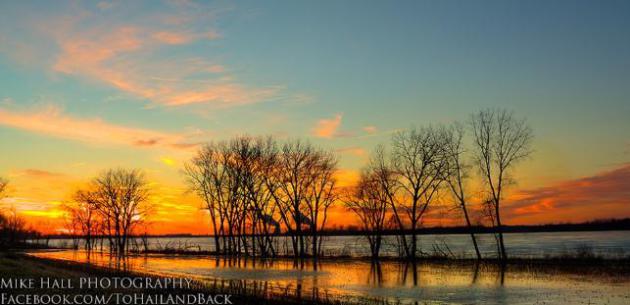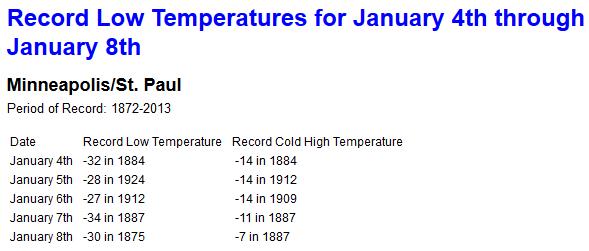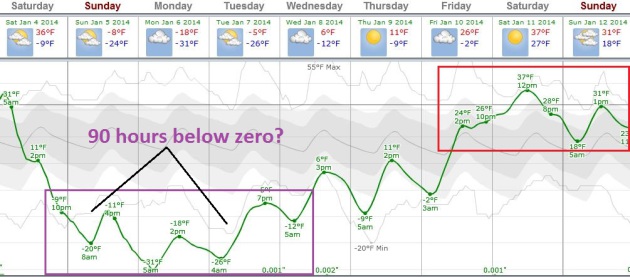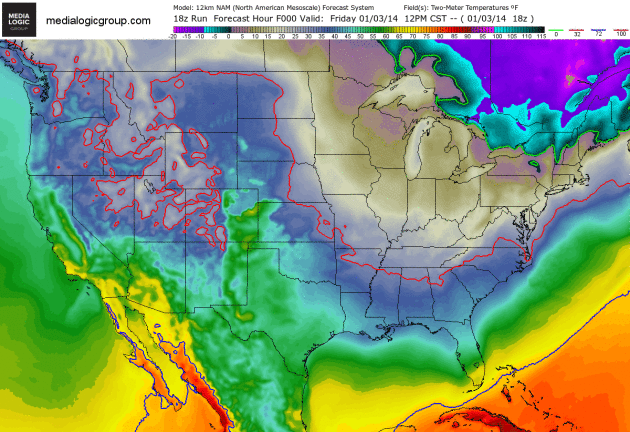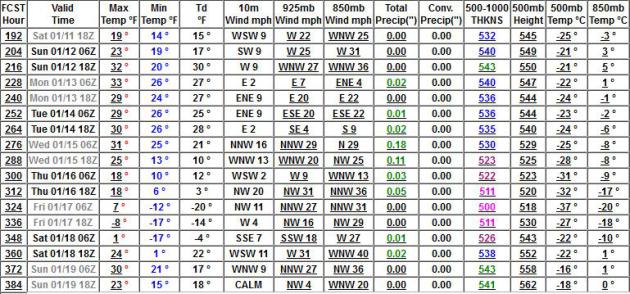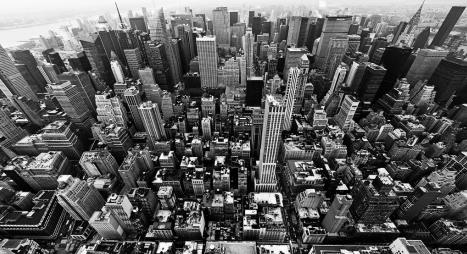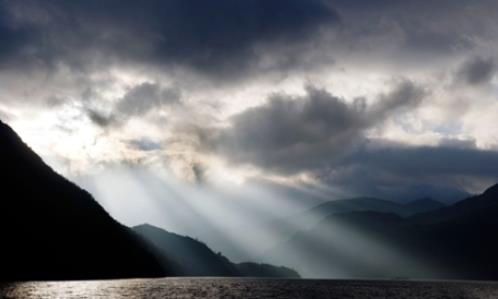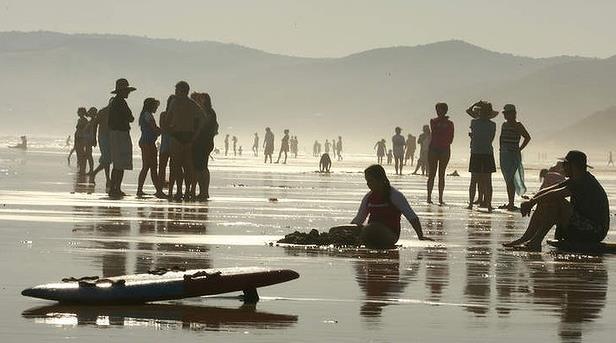-27 F. December 26, 1996 in the Twin Cities (last time air temperatures were colder than -25F in the metro).
Population Control
This
is why we'll never have population of 10 million. Word of mouth travels
faster than Twitter, even Faceplant. When the rest of America hears of
our Siberian Invasion ("wait, the AIR temperature dipped to 25 below!?")
many weather snobs will scratch us off their bucket list. Thank God. In
a strange way Canada is doing us all a back-handed favor.
I've learned the hard way to never tell a Minnesotan not to go outside. But Sunday into Tuesday morning will be
dangerously cold, probably the coldest since -24F, on January 30, 2004. For some communities it may be the coldest since 1996.
If
you're dressed properly (no exposed skin) and physically active you can
weather such extremes. I'm more concerned about kids standing at the
bus stop Monday morning, with a wind chill of minus 45.
We may see
close to 90 hours/row below zero. Pete Boulay at the Climate Office
reminds us that the record is 186 hours (1911-1912). The record cold
daytime high Monday is -14 in 1909. Wind chill values Monday may
approach 50 below - posing significant risk even to people who are
dressed for the weather. The decision to cancel school, statewide, on
Monday was a wise one, in my humble opinion.
We bottom out early
next week. 3 days of moderate pain then rapid recovery. 30s (above)
return late next week, as we all hum a silent prayer of Thanksgiving.
* photo credit: Mike Hall Photography.
Record Territory. Here is a list of record highs and lows, day by day, courtesy of the Minnesota Climate Office and
The National Weather Service. We'll be close to record territory, especially Monday the 6th.
Dueling Models.
By 6 AM Monday temperatures are forecast to close to record values,
ranging from -16F (NAM) to -24 (GFS) to -26 (GFSMOS), the coldest in at
least 10 years, possibly since 1996 for much of Minnesota. Source: Smart
Energy.
A January To Remember.
3 days of significant pain, then rapid recovery by the end of the week,
with 30s (above!) next weekend. Right now I'm betting on about 90
consecutive hours of subzero readings, Monday morning is when we bottom
out - for the winter, I pray. Source: Weatherspark.
Polar Plunge.
If it's any consolation sub-freezing weather may push as far south as
Orlando. Mickey and Goofy are not amused. Subzero temperatures will push
across the Midwest and Great Lakes into the Ohio Valley and New England
next week. The solid green line marks the 0F isotherm, the solid red
line: 32F. It's going to get so cold over the Upper Midwest we actually
ran out of colors. First time for everything. Loop: NOAA's NAM model and
Ham Weather.
A Badly Needed Shift In The Pattern.
We'll see more cold fronts - that's a bet with high confidence. But
there's growing evidence that the worst of winter, in terms of
record/historic cold, comes early next week, with a run of 20s and 30s
after January 11, extending into the third week of the month. We're due
for a correction.
 Thursday-Friday Snowfall Totals
Thursday-Friday Snowfall Totals.
NOAA has a good map (above) showing the snowfall amounts from the
recent storm, as much as 5-8" in New York City, with up to 13-15" in the
Boston area.
December Weather Recap. Here are a few highlights from the State Climatology Office and the
Minnesota DNR:
- December
2013 precipitation totals were above historical averages across much of
the northern two-thirds of Minnesota. Precipitation totals were near to
above average elsewhere in the state. Many northern Minnesota
communities reported over two feet of snowfall for the month.
- Average
monthly temperatures for December were well below historical averages,
finishing 6 to 12 degrees below normal. For some communities, December
2013 ranks among the ten coldest Decembers on record.
- Snow
depths exceed 12 inches over most of the northern two-thirds of
Minnesota. Snow depths across the southern one-third of the state range
from four to eight inches. Throughout nearly all of Minnesota, snow
depths are above the historical median for the date.
- The U. S. Drought Monitor, released on January 2, places sections of the southern one-half of Minnesota in the Moderate Drought category. The drought classification is the result of a very dry late summer and early autumn.
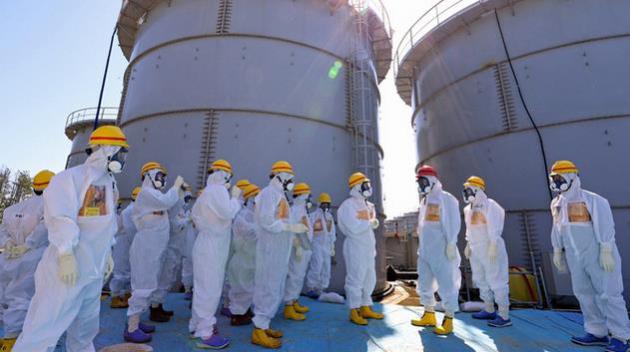
Mystery Steam Over Fukushima Could Be Sign Of Another Meltdown.
Gizmodo has the story - here's a clip: "
The newest update in the highly disconcerting series of devastating failures that is the Fukushima cleanup effort is troubling to say the least. Tepco has confirmed
that (unexplained) plumes of steam have been rising from the mangled
remains of Reactor Building 3. In other words, there's a chance
Fukushima could be in the middle of another meltdown. The thing is, no
one has been able to find out the exact cause of the rising, mysterious
radioactive steam because the combination of physical damage and, more
importantly, lethal radiation levels have made investigating the reactor
impossible..."
2013: The Year In Science. The techno-geeks at
Gizmag take a look; here's an excerpt: "
The
close of 2013 gives us an excellent opportunity, though satiated with
holiday feasts, to look back on a year that has been filled with
scientific accomplishment. So it's time to get comfortable on your Binary Chair, sip your hot cocoa from a phase-change mug while your Foodini prints out a batch of cookies and reflect on science stories of note from the past year..."
This Dumb Year: The 47 Lamest Moments In Tech, 2013.
Time Magazine has a good run-down of some of the more head-slapping moments of last year; here's the intro: "
In tech, dumb moments come in an array of flavors — but some years have definite overarching themes. 2012, for instance, was the year of the apology.
And 2013 turned out to be the year that proved human beings shouldn’t
be allowed to use Twitter. Or at least it kept feeling that way.
Everybody kept tweeting stuff they probably came to regret. Celebrities
such as BlackBerry Global Creative Director Alicia Keys, whose only
mistake was tweeting from an iPhone (unless, as she said, the tweet came
from an iPhone-using hacker). People we never heard of until they
embarrassed themselves on Twitter and got fired, including Business
Insider’s CTO, IAC’s PR honcho and a producer of The Bachelor. Even
beloved American institutions such as AT&T and SpaghettiOs..."

Tips For A Successful Digital Detox.
Step away from the smartphone please. If you're finding it increasingly
difficult to keep up with e-mails, FB posts, tweets, etc - here are a
few suggestions from
Shape Magazine: "
Chances
are your smartphone is within arm’s reach right now, if you’re not
already using it to read this. We’re spending more time than ever on our
digital devices—anywhere from one to two hours daily, depending on
which study you consult—and with the flood of incoming texts, emails,
calls, and push notifications, it’s rare if our screens stay dark for
more than a moment. While there’s no doubt technology has made our lives
easier in many ways (remember roadmaps?), research suggests that our
addiction to it is real. “Every new notification or text triggers the
release of dopamine, a neurotransmitter that drives us to seek rewards,
so you keep coming back for more," explains Levi Felix, co-founder of Digital Detox and Camp Grounded, which run tech-free weekend getaways for adults..."
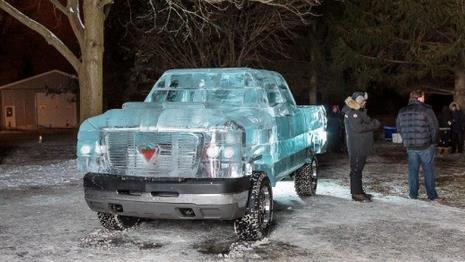
Canadian Tire Ice Truck Redefines Cold Weather Driving. I suspect many of us will have vehicles that resemble this by early next week - details from
gizmag.com: "
With
Eastern Canada experiencing one of the worst ice storms in recorded
history, the idea of an ice truck might seem overtly ironic to some. The
ice sculpting house of Iceculture and Canadian Tire, however, already
had their 15,000 lb ice truck planned, built and ready to go before the
storm hit..."

Climate Stories...
On Defense: Cities Get Serious About Climate Resilience In 2013. Sandy
was a 2 by 4 across the head for New York City, but other cities are
waking up and taking steps to counter a more volatile climate. Here's an
excerpt from
Grist: "...
Sandy
was the second major storm to plow through New York in as many years,
and as we learned during our retrospective this fall, it wasn’t even the long-feared Big One. Sandy ricocheted into the coast. A direct hit, which will no doubt come eventually, will be much worse, particularly as warmer seas whip up more powerful storms, and rising sea levels bring them to more of our doorsteps. This year saw more weather extremes, including biblical floods that swept away houses, roads, and bridges in Calgary, Alberta, and Boulder, Colo., a heatwave in Alaska, bitter cold in Florida, and a monstrous typhoon that wreaked massive havoc in the Philippines, killing more than 6,000 people. It’s impossible to blame climate change alone for any of these events, of course, but it certainly made many of them worse, and science tells us they’re signs of things to come..."
Photo credit above:
Andrew Ferguson.
Five Basic Antarctic Facts For Climate Change Skeptics. The Guardian
has some perspective on the "warmist" ship that recently got caught in
Antarctic ice, leading to the evacuation of those onboard. Here's an
excerpt: "
To most people the prolonged stranding of the MV Akademik
Shokalskiy in thick pack ice off the coast of Antarctica is an
unfortunate incident that provided passengers with rather static scenery
for their Christmas and New Year celebrations. But to some climate
change contrarians, repeated attempts to free the vessel from the ice
are proof that the theory of climate change is flawed or, at best,
exaggerated. After all, a warming planet has no ice at all, right? In
Sydney’s Daily Telegraph, Roger Franklin dispensed with analysis of ice
extent, the cyrosphere and the like to get to the heart of the matter
– expedition leader Chris Turney is a “warmist” whose understanding of
Antarctica amounts to little more than it gets “really, really cold”...
Photo credit above: "
The
Intergovernmental Panel on Climate Change says there is "high
confidence that ice shelves around the Antarctic peninsula continue a
long-term trend of retreat and partial collapse". Photograph: AAP.
Kerry Shifts State Department Focus To Environment. Will the administration be able to move the needle? Here's an excerpt from a
New York Times article: "...
But
while the public’s attention has been on his diplomacy in the Middle
East, behind the scenes at the State Department Mr. Kerry has initiated a
systemic, top-down push to create an agencywide focus on global
warming. His goal is to become the lead broker of a global, legally
binding climate treaty in 2015 that will commit the United States and
other nations to historic reductions in fossil fuel pollution. Whether
the secretary of state can have that kind of influence remains an open
question, and Mr. Kerry, despite two decades of attention to climate
policy, has few concrete accomplishments on the issue..."
Crank It Up. Cartoon courtesy of
David Horsey at The Los Angeles Times.
Climate Change Models Underestimate Likely Temperature Rise, Report Shows. Here's an excerpt from
The Guardian: "
The
Earth’s climate is far more sensitive to carbon dioxide emissions than
previously thought, heightening the likelihood of a 4C temperature rise
by 2100, new Australian-led research of cloud systems has found. The
study, published in Nature,
provides new understanding on the role of cloud formation in climate
sensitivity – one of the key uncertainties in predictions of climate
change. Report authors Steven Sherwood, Sandrine Bony and Jean-Louis Dufresne
found climate models which show a low global temperature response to
CO2 emissions do not factor in all the water vapour released into the
atmosphere..."
Photo credit: "
Understanding cloud formation is key to predicting climate change." Photograph: CBW/Alamy.
Climate Change: Planet To Warm 4C By 2100.
Following up on the latest research into cloud dynamics and possible
impact on warming here's an excerpt of a slightly different perspective
from
The Sydney Morning Herald: "...
Forecasts
in many climate models for lower temperature rises were based on
assumptions that clouds might help limit temperature increases. But the
team claims to have found the key to predicting cloud behaviour, and
forecasts that clouds will not be nearly as helpful as thought in many
models. Current models estimate a doubling of carbon dioxide in the
atmosphere - a level that may be reached by mid-century - will result in
temperature rises of between 1.5 degrees and 5 degrees. Instead, the
likely range will be 3-5 degrees for twice the amount of C02, the study
found..."
Photo credit above: "
New research suggests temperatures will rise between 3-5 degrees for a doubling of C02." Photo: Michael Clayton-Jones.
